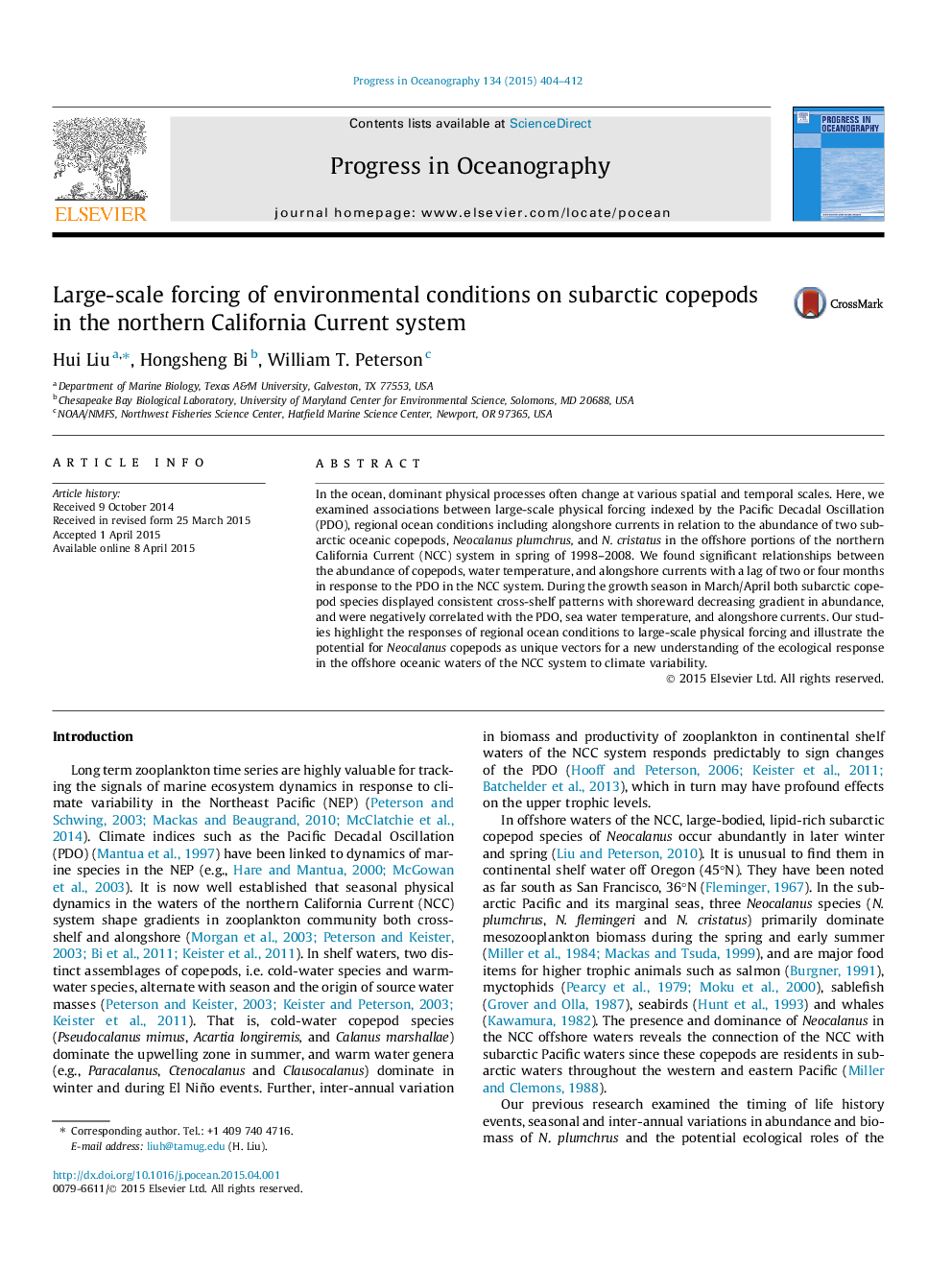| Article ID | Journal | Published Year | Pages | File Type |
|---|---|---|---|---|
| 6388598 | Progress in Oceanography | 2015 | 9 Pages |
â¢Two subarctic Neoclanus species are abundant in the NCC open waters.â¢Significant relationships exist between temperature, alongshore currents and copepods.â¢We found shoreward decreasing gradient in abundance of two copepods species.â¢We explored structured regional responses to large-scale forcing indexed by PDO.â¢We illustrated a new understanding of the NCC offshore waters to climate variability.
In the ocean, dominant physical processes often change at various spatial and temporal scales. Here, we examined associations between large-scale physical forcing indexed by the Pacific Decadal Oscillation (PDO), regional ocean conditions including alongshore currents in relation to the abundance of two subarctic oceanic copepods, Neocalanus plumchrus, and N. cristatus in the offshore portions of the northern California Current (NCC) system in spring of 1998-2008. We found significant relationships between the abundance of copepods, water temperature, and alongshore currents with a lag of two or four months in response to the PDO in the NCC system. During the growth season in March/April both subarctic copepod species displayed consistent cross-shelf patterns with shoreward decreasing gradient in abundance, and were negatively correlated with the PDO, sea water temperature, and alongshore currents. Our studies highlight the responses of regional ocean conditions to large-scale physical forcing and illustrate the potential for Neocalanus copepods as unique vectors for a new understanding of the ecological response in the offshore oceanic waters of the NCC system to climate variability.
